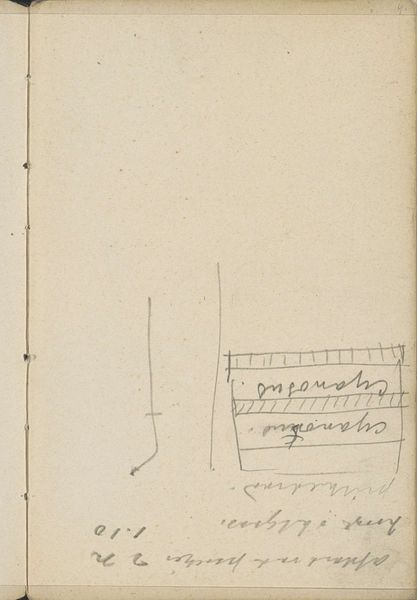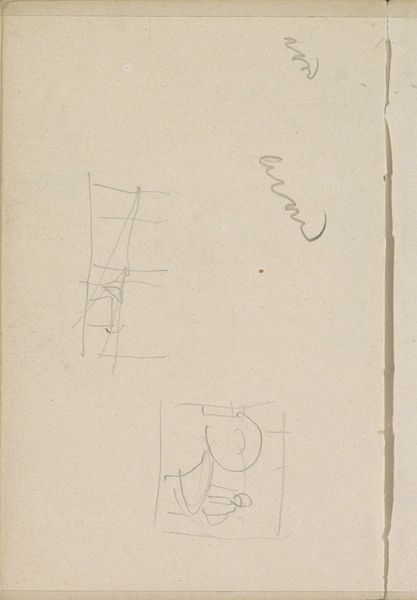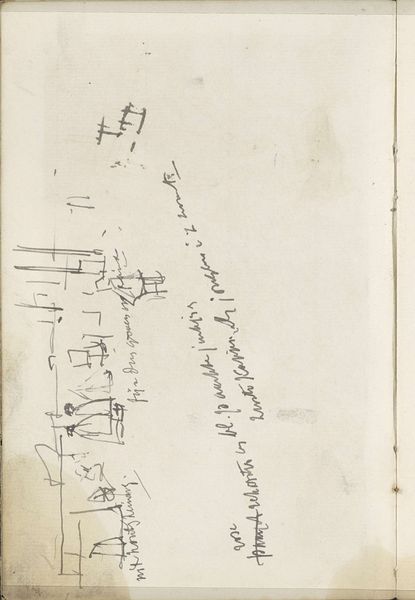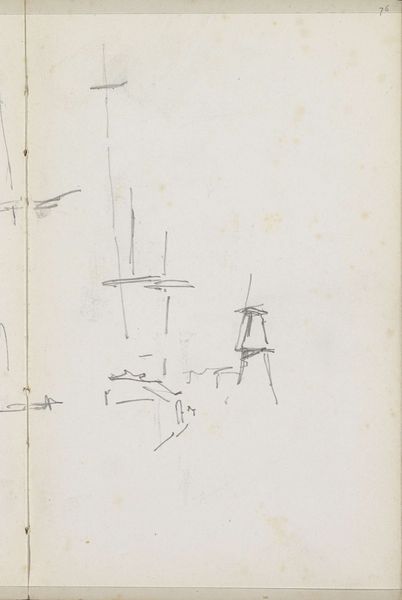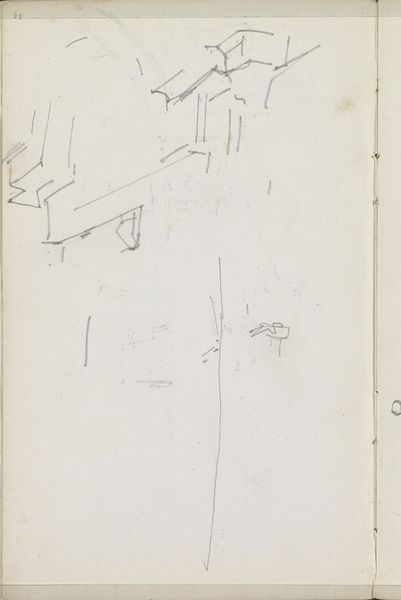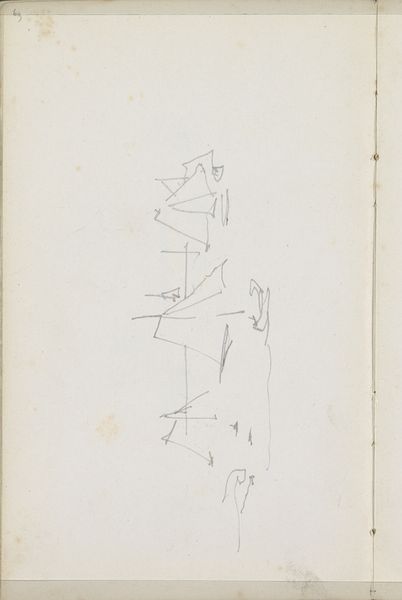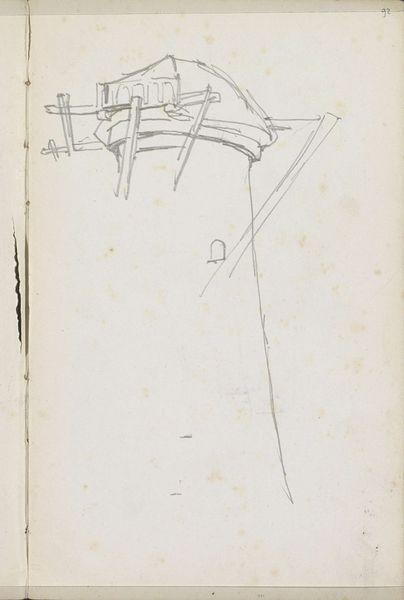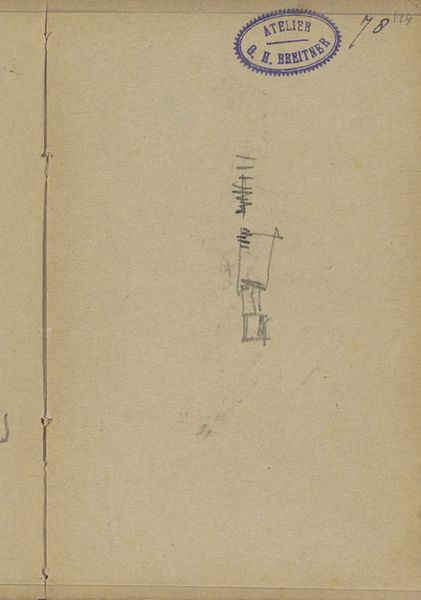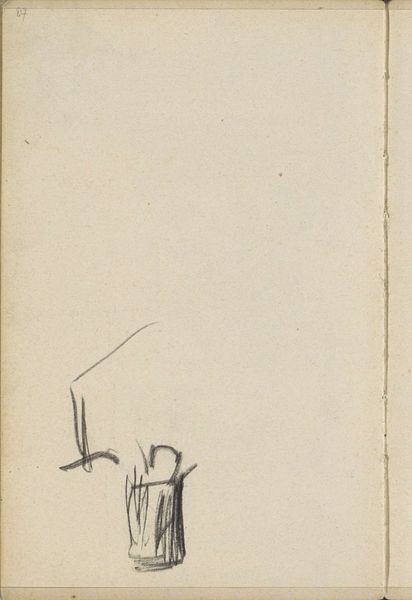
Copyright: Rijks Museum: Open Domain
Editor: This is George Hendrik Breitner's "Studie, mogelijk van goederen," or "Study, possibly of goods," a pencil drawing from around 1900 to 1901, held at the Rijksmuseum. It's so minimal; a sketch really. What catches your eye in this seemingly simple study? Curator: I see Breitner using the sketchbook not just for observation, but as a site for engaging with the economic and social transformations of his time. This sketch, though preliminary, hints at the complex systems of labor and trade underpinning the urban landscape. Consider the term "goods," objects that participate in power dynamics and commodity exchange, whose creation and consumption greatly affected social and political realities. Editor: That's a completely different perspective than how I initially saw it! So, you're saying this isn't just a quick drawing of some cargo? Curator: Exactly. The very act of depicting these "goods," even in a fleeting sketch, acknowledges their role within a capitalist framework. Breitner, deeply interested in urban life and social conditions, might be using this study to explore themes of labor, production, and consumption that were central to the era. Where might such ‘goods’ have been displayed, sold, bought, or traded? Editor: I hadn't thought about the loaded word "goods" itself. I was too caught up in its loose rendering. Now I see it speaks volumes of urban, capitalist economies. Curator: These sketches remind us that art isn’t divorced from its sociopolitical moment. Breitner wasn't merely recording reality; he was processing the societal structures. Editor: I’ll never look at a sketch the same way. Thank you for showing how context can deepen our understanding!
Comments
No comments
Be the first to comment and join the conversation on the ultimate creative platform.



